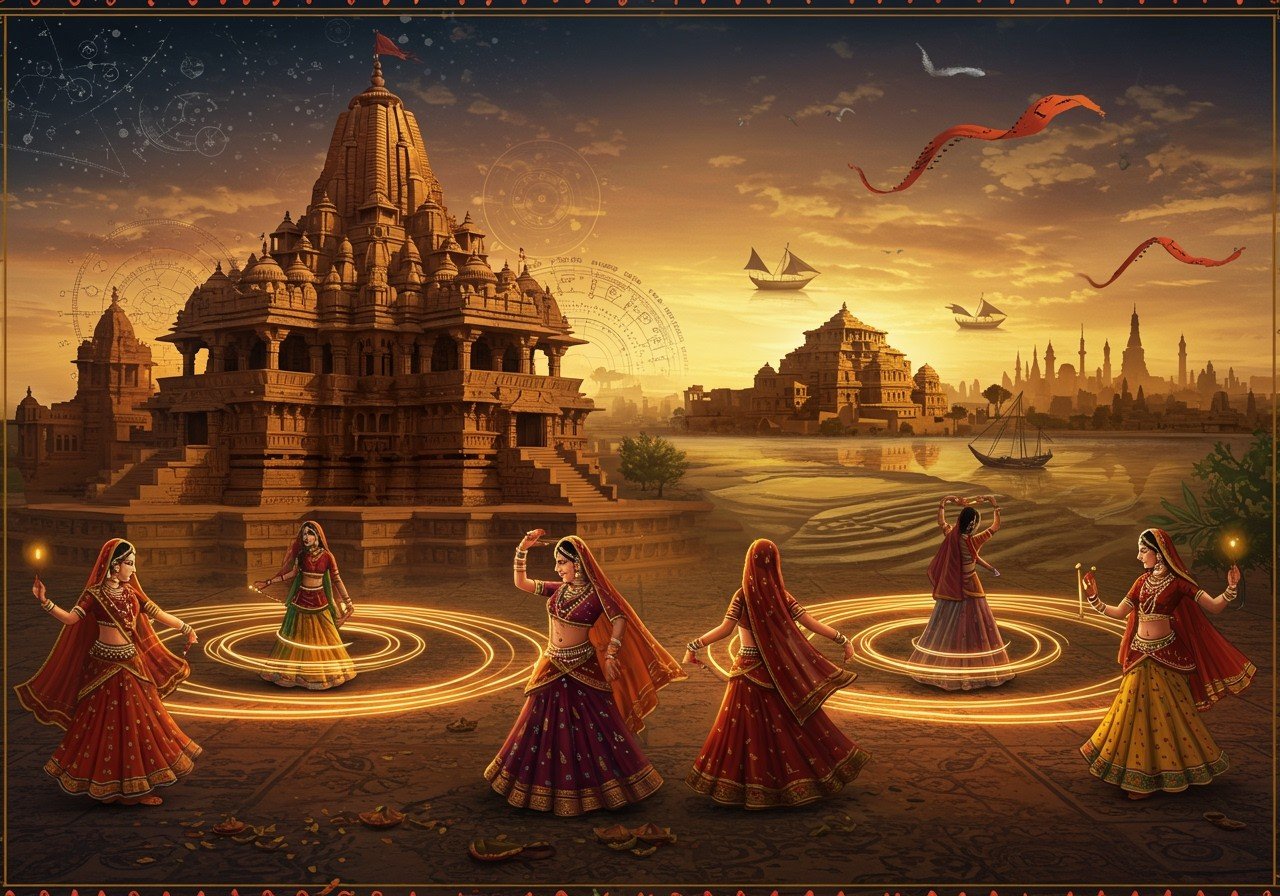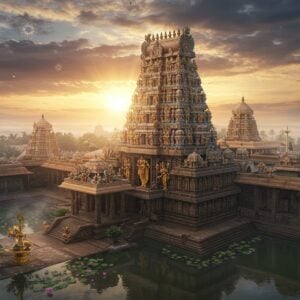
Gujarat, a western Indian state, stands as a testament to a rich tapestry of history, mirroring its diverse cultural heritage and traditions. This exploration delves into Gujarat’s historical odyssey, highlighting its evolution over centuries. From ancient settlements to modern progress, Gujarat’s narrative speaks volumes about its resilience and cultural significance.
Ancient Gujarat
Gujarat’s origins trace back to the Stone Age, with subsequent Chalcolithic and Bronze Age settlements, including the prominent Indus Valley Civilization. Coastal cities like Bharuch became vital ports and trade hubs under various empires, such as the Nanda, Maurya, Satavahana, Gupta, and Western Kshatrapas. Archaeological discoveries at Lothal and Dholavira unveil insights into urban planning, trade, and daily life during the Indus Valley Civilization (around 2500 BCE). The Maurya and Gupta empires significantly influenced Gujarat’s development, fostering advancements in art, architecture, and trade. Jainism and Buddhism also played key roles, evidenced by ancient temples and stupas. Gujarat actively engaged in maritime trade with civilizations like Mesopotamia and Egypt.
Medieval Gujarat
The medieval era witnessed Gujarat under the rule of various dynasties. The Solanki dynasty made significant contributions to architecture, notably the iconic stepwells like Rani ki Vav. The Vaghela dynasty valiantly defended Gujarat against invasions. The Sultanate of Gujarat ushered in Islamic influence, leading to a fascinating cultural fusion. As a major trade center, Gujarat attracted merchants from far and wide, including Arabia, Persia, and Africa. Architectural marvels from this period, such as mosques and mausoleums in Ahmedabad, stand as testaments to this era’s rich heritage. Medieval Gujarat was characterized by its vibrant cultural and religious diversity.
Colonial Gujarat
British colonial rule significantly impacted Gujarat’s socio-economic landscape. British trade centers emerged in cities like Surat and Ahmedabad, while colonial policies reshaped agriculture and industry. Gujarat played a pivotal role in India’s struggle for independence, with iconic figures like Mahatma Gandhi and Sardar Vallabhbhai Patel leading the charge. Events like the Dandi March and the Quit India Movement originated in Gujarat. This period also witnessed a cultural renaissance, marked by the rise of Gujarati literature and arts.
Modern Gujarat
Post-independence, Gujarat embarked on a transformative journey. Princely states integrated into the Indian Union, resulting in administrative reorganization. The state experienced remarkable economic growth and industrialization, particularly in sectors like textiles, petrochemicals, and pharmaceuticals. Major infrastructure projects, including ports and highways, were undertaken. Political leaders shaped modern Gujarat through various initiatives. A cultural revival focused on preserving traditional crafts and festivals. Gujarat also made significant strides in education, healthcare, and social development.
Cultural Heritage
Gujarat boasts a rich cultural heritage, encompassing vibrant festivals like Navratri, Diwali, and Uttarayan. The state is renowned for its diverse culinary traditions, ranging from street food delights to exquisite royal cuisine. Gujarati literature and performing arts have flourished, with contributions from renowned poets and playwrights. Traditional crafts, such as Patola silk weaving and Bandhani textile art, continue to be cherished and preserved. Historic sites like the Sun Temple at Modhera and the forts of Junagadh hold immense cultural importance. Folk music and dance remain integral to Gujarat’s cultural identity.
Poojn.in: Your Gateway to Preserving Gujarati Culture
Poojn.in, India’s largest cultural goods and services store, empowers you to uphold Gujarat’s rich traditions through a vast collection of authentic puja items and religious supplies. Our user-friendly online platform provides a convenient way to acquire traditional Gujarati puja essentials, ensuring that cultural practices remain accessible in the modern age. We offer everything you need for traditional Gujarati rituals and ceremonies:
- Traditional Gujarati Puja Thalis: Find beautifully crafted thalis complete with all the essential components for performing traditional Gujarati pujas. Explore our collection of puja essentials.
- Authentic Copper and Brass Items: Discover a wide selection of diyas, kalash, and other puja items crafted from pure copper and brass, adding a touch of traditional elegance to your rituals. Find exquisite brass items here.
- Sacred Threads and Religious Accessories: Acquire sacred threads, rudraksha malas, and other religious accessories essential for various Gujarati ceremonies and rituals. Browse our selection.
- Customary Offerings and Prasad Items: Source traditional Gujarati prasad items and offerings to complete your pujas and ceremonies with authenticity. Shop for incense and other offerings.
With pan-India delivery, Poojn.in ensures easy access to genuine Gujarati puja items, regardless of your location. Download our mobile app for a seamless browsing and ordering experience. We guarantee secure packaging and timely delivery of all religious items right to your doorstep.
Conclusion
Gujarat’s historical narrative is a testament to its resilience and enduring cultural significance. From ancient civilizations to modern advancements, Gujarat has gracefully preserved its rich traditions while embracing progress. The state’s journey through time showcases its remarkable adaptability and capacity to thrive. The vibrant festivals, culinary delights, and artistic expressions reflect Gujarat’s indomitable spirit. As we honor the past, we also look towards a future where tradition and modernity coexist harmoniously, providing convenience without compromising authenticity. Let us celebrate Gujarat’s legacy and continue to cherish its invaluable contributions to our shared cultural heritage.
Exploring Gujarat’s Past: Frequently Asked Questions
What defines the ancient history of Gujarat? Gujarat’s ancient history traces back to the Indus Valley Civilization, with Lothal serving as a significant port and trade center.
Who were Gujarat’s principal rulers? Gujarat witnessed rule under the Mauryas, Guptas, Solankis, Mughals, Marathas, and the British.
How did Gujarat become a part of India? Gujarat joined the Indian Union post-independence from British rule in 1947, officially becoming a separate state on May 1, 1960.
What is Lothal’s significance in Gujarat’s history? Lothal, a prominent Indus Valley Civilization city, is renowned for its ancient dockyard and advanced urban planning.
For more in-depth explorations, consider these resources:
- Sun Temple Modhera: Your Complete Guide
- Konark vs Modhera: A Sun Temple Comparison
- Sun Worship in Hinduism
- Gujarati Culture: Festivals, Cuisine, and Customs Explored


